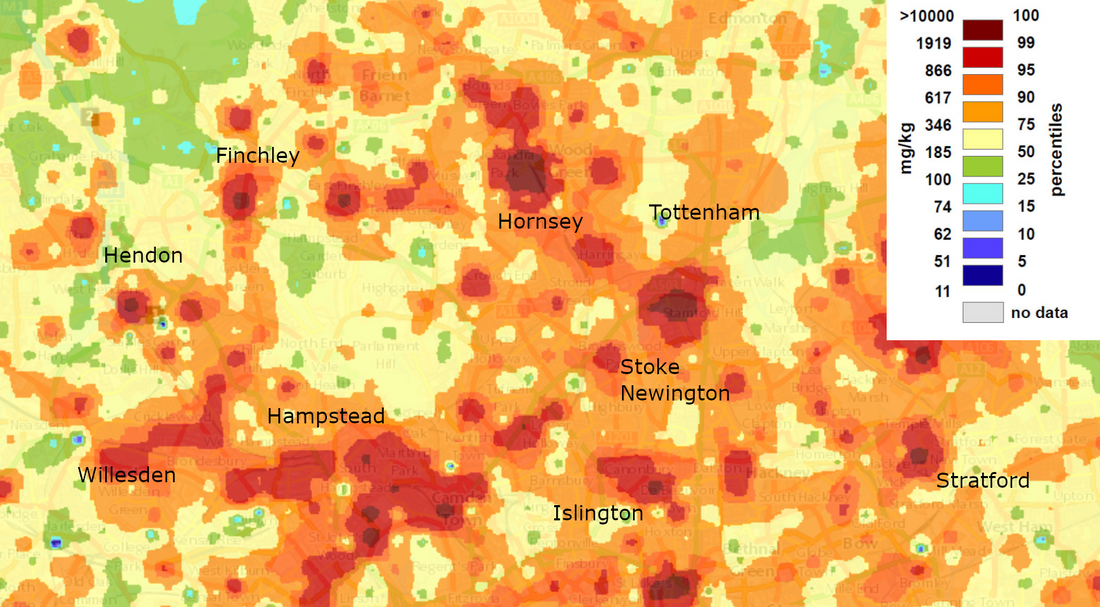
Lead in soil - what you need to know
Share
If you are a keen gardener, if you enjoy growing edible plants with your little ones, you need to know about lead in soil.
Decades of leaded petrol exhaust billowing over our cities, German bombing campaigns which incinerated lead flashing and pipes, and ordinary renovations, have polluted urban soils to an extraordinary degree. Typical levels in London hover around 300-600 mg/kg. Spots of worse pollution are scattered throughout the city (dark brown on the map) with levels over 2000 mg/kg.
For comparison, the American Environment Protection Agency (EPA) mandates that exposed soil in areas where children play should be below 400 mg/kg. The University of Pennsylvania publishes a helpful chart with advice on what to do above this level. Above 1000 mg/kg (many places in London), the advice is do not garden.
Lead in soil can find it's way into children through the soil being ingested accidentally or on purpose, the uptake of the lead into edible plants and, possibly most significantly, "resuspension" - soil kicked into dust by wind or broom, which is then inhaled.
A percentage of the public health establishment hypothesizes that Pb [lead] loading inside homes originates primarily from the deterioration of Pb based paints – “the paint-only hypothesis”. However, there is a large body of literature that argues that an appreciable percentage of the source of elevated Pb loadings inside homes originates from an enormous reservoir of Pb contaminated dusts and soils that exists outside the home and is transported inside the home via soil resuspension (Laidlaw et al., 2005) and tracked in via Pb contaminated dust and soil attached to shoes (Hunt et al., 2006) and on the feet of family pets. (source)
If you live in a city and are a keen gardener, your garden could well be the most significant source of lead contamination in your house. To understand your risks, get the soil tested.
The map of background lead soil levels in London is provided by the British Geological Survey.
